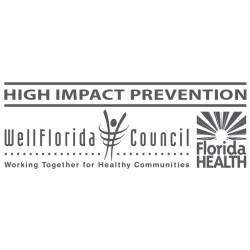Research ties economic inequality to gap in life expectancy
Washington Post, March 10, 2013
By Michael A. Fletcher
ST. JOHNS COUNTY, Fla. — This prosperous community is the picture of the good and ever longer life — just what policymakers have in mind when they say that raising the eligibility age for Social Security and Medicare is a fair way to rein in the nation’s troublesome debt.
The county’s plentiful and well-tended golf courses teem with youthful-looking retirees. The same is true on the county’s 41 miles of Atlantic Ocean beaches, abundant tennis courts and extensive network of biking and hiking trails. The healthy lifestyles pay off. Women here can expect to live to be nearly 83, four years longer than they did just two decades earlier, according to research at the University of Washington. Male life expectancy is more than 78 years, six years longer than two decades ago.
But in neighboring Putnam County, life is neither as idyllic nor as long.
Incomes and housing values are about half what they are in St. Johns. And life expectancy in Putnam has barely budged since 1989, rising less than a year for women to just over 78. Meanwhile, it has crept up by a year and a half for men, who can expect to live to be just over 71, seven years less than the men living a few miles away in St. Johns.
The widening gap in life expectancy between these two adjacent Florida counties reflects perhaps the starkest outcome of the nation’s growing economic inequality: Even as the nation’s life expectancy has marched steadily upward, reaching 78.5 years in 2009, a growing body of research shows that those gains are going mostly to those at the upper end of the income ladder.
The tightening economic connection to longevity has profound implications for the simmering debate about trimming the nation’s entitlement programs. Citing rising life expectancy, influential voices including the Simpson-Bowles deficit reduction commission, the Business Roundtable and lawmakers on both sides of the aisle have argued that it makes sense to raise the eligibility age for Social Security and Medicare.
But raising the eligibility ages — currently 65 for Medicare and moving toward 67 for full Social Security benefits — would mean fewer benefits for lower-income workers, who typically die younger than those who make more.
“People who are shorter-lived tend to make less, which means that if you raise the retirement age, low-income populations would be subsidizing the lives of higher-income people,” said Maya Rockeymoore, president and chief executive of Global Policy Solutions, a public policy consultancy. “Whenever I hear a policymaker say people are living longer as a justification for raising the retirement age, I immediately think they don’t understand the research or, worse, they are willfully ignoring what the data say.”
A Social Security Administration study several years ago found that the life expectancy of male workers retiring at 65 had risen six years in the top half of the income distribution but only 1.3 years in the bottom half over the previous three decades.
In 1980, life expectancy at birth was 2.8 years longer for the highest socioeconomic group defined in a research study than the lowest, according to a report by the Congressional Budget Office. By 2000, the gap had grown to 4.5 years.
“Life expectancy has increased mainly among the privileged class,” said Monique Morrissey, an economist who focuses on retirement issues at the Economic Policy Institute, a liberal-leaning research organization. “For many people, raising the retirement age would amount to a significant benefit cut.”
Advocates of raising the retirement age say only a relative handful of older workers would be harmed and that the vulnerable could be protected by enacting hardship exemptions. Meanwhile, they say, with a wave of baby boomers moving toward retirement and health-care costs always on the rise, the retirement programs are sustainable only if people are willing to pay higher taxes or accept fewer benefits.
Overall, life expectancy has improved substantially since the first Social Security payments were issued in 1940. Then, a man who made it to 65 could expect to live 12.7 years, compared with 18.6 years in 2010. A woman who turned 65 in 2010 could expect to live 20.7 more years, compared with 14.7 in 1940.
That trend helped persuade lawmakers in 1983 to slowly move the age people could receive full Social Security benefits from 65 to 67, a change that will be complete in 2027. Now, as the cost of providing old-age benefits has emerged as the key driver of the nation’s long-term budget deficit, there is increasing pressure to again raise the retirement age — this time for both Medicare and Social Security.
But given the widening differences in life expectancy for people on opposite ends of the income scale, “that would mean a benefit cut that falls heaviest on people who generally are most reliant on Social Security for their retirement income. It is totally class-based,” said Eric Kingson, a Syracuse University professor and co-chair of Social Security Works, a coalition opposed to reducing old-age benefits.
The gap in life expectancy has widened as the country’s economic life has grown more bifurcated. The high-income Washington region includes two counties with some of the nation’s longest life expectancies. In Montgomery County, life expectancy was 81.4 years for men and 85 years for women in 2009. In Fairfax County, it was slightly lower — 81.3 years for men and 84.1 years for women.
In the District, where 18.7 percent of the population lives in poverty, life expectancy was 72.6 years for men and 79.6 for women in 2009.
Not only is life expectancy diverging by income level, but now some demographic groups — particularly low-income white women — are losing ground.
A study published last week in the journal Health Affairs said that in almost half of the nation’s counties, women younger than 75 are dying at rates higher than before. The counties where women’s life expectancy is declining typically are in the rural South and West, the report said.
Putnam County shares many of those characteristics. Forests, picturesque lakes and the beautiful St. Johns River, the longest in Florida, dot the area. But amid that rural splendor there are few good jobs and, officials said, little access to medical care.
Even people who have health insurance often struggle to make it to doctor appointments, complicating efforts to manage chronic diseases.
“I see a lot of people with uncontrolled diabetes or who haven’t had their high blood pressure treated in a year or more,” said Terrence Soldo, medical director for St. Vincent’s Mobile Health, which runs regular medical clinics in Putnam. “There are health-care deserts out here.. . . There is a lack of access because there are not enough doctors around.”
County health rankings by the Robert Wood Johnson Foundation show that there is one primary care physician for every 2,623 residents in the county. One county east in St. Johns, there are more than double the ratio of family doctors, one for every 1,067.
The problem goes beyond access. In St. Johns, residents are more likely to seek out information to bolster their health. Even when St. Johns residents do not search for health information, medical professionals say they are at minimum more likely to follow doctors’ orders.
“Being more affluent and educated, you are likely to have better access to information and you are also more likely to want it,” said Joe Gordy, chief executive of Flagler Hospital, which is in St. Johns County.
Jeff Feller, chief executive of WellFlorida Council, a state-designated regional health-care nonprofit organization, described Putnam as part of “the Southern disease belt.”
With 38 percent of its children in poverty and just 31 percent of its population with even some college education, there is little wonder why more than a fifth of Putnam residents are in poor or fair health, double the rate in St. Johns.
Adults also smoke at nearly double the rate they do in St. Johns, and they are far more likely to be obese and far less likely to be physically active, according to rankings developed by the Robert Wood Johnson Foundation.
“It doesn’t take a rocket scientist to figure this out,” Feller said. “You just have to look at the socioeconomic and demographic differences — unemployment, education levels, income between the two counties — to understand what is going on. This is fueled by poor economics and a lack of access to health insurance and health coverage.”
Those differences are compounded by the resource gap separating the two counties. With a healthy tax base that is recovering from the recession, St. Johns officials are in a better position than those in Putnam to address problems as they arise. When St. Johns officials learned of a change in the infant mortality rate, they quickly joined forces with local nonprofit groups to get information out encouraging prenatal care.
Cyndi Stevenson, a member of the St. Johns County commission, said the county has formed similar partnerships to tackle a wide range of problems. The result is a county ranked as one of the healthiest places in Florida. Putnam, meanwhile, is ranked near the bottom.
She added that the county’s relative wealth helps make life not only better for its residents, but also longer. “A good economy does a lot for a family,” Stevenson said.
Read the article Research ties economic inequality to gap in life expectancy
This article is also published in the St. Augustine Record.
Back to News page












